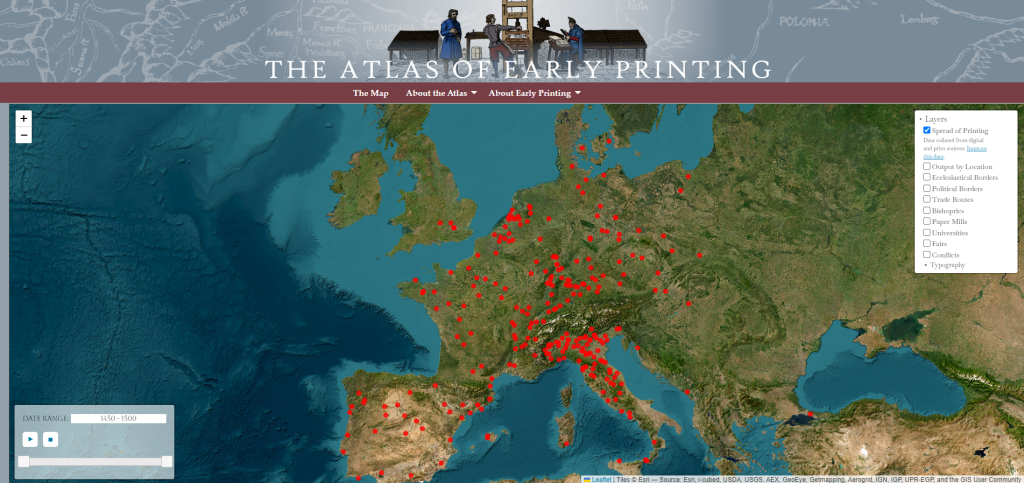The field of digital humanities combines digital technologies and computing with the disciplines of the humanities. It has provided many new research opportunities, but just like in fields such as the natural sciences, researchers often encounter the limitations of classical computers. This is why it is interesting to look at an entirely new area within the humanities that takes computation one step further: quantum humanities.
What are classical computers used for in humanities?
To explain the potential of quantum humanities and quantum computers, it’s helpful to first explore a few examples of how classical computers are currently being used in humanities research.
Voyant for example, is a website that allows users to automatically analyse text. It was created by two digital humanities professors, with the goal to help students use text analysis in scholarly research.
Another example is The Atlas of Early Printing. As their website states, it is “an interactive site designed to be used as a tool for teaching the early history of printing in Europe during the second half of the fifteenth century”. It can be used to gain insights into cultural diffusion.

Quantum Computing VS Classical Computing
A quantum computer and a classical computer differ in how they process and store information. In a classical computer, the fundamental units of information are represented by bits. A bit is always in one of two states: “0” or “1”. A computer combines millions of these 0’s and 1’s to analyse your text input, or to display a map about the spread of printing technology.
A quantum computer uses qubits instead of regular bits. While a regular bit can only be exactly 0 or 1, a qubit can also be in any combination of 0 and 1. For example, a qubit could be 20% 1 and 80% 0. This phenomenon is called superposition. It allows quantum computers to process tasks that involve enormous amounts of data and computation, far beyond the capacity of a classical computer.
What could quantum computers be used for in humanities?
A quantum computer uses quantum algorithms. In general, these algorithms might be useful for any research within the humanities that involves amounts of data that cannot be processed by a classical computer within a reasonable time period. An example was provided by Johanna Barzen and Frank Leymann in 2019, who used quantum algorithms to identify costumes from a database of clothes, which was created using digital humanities.
Last year, a group of researches introduced a research programme for quantum humanities. A few of the applications they list are quantum music, natural language processing, and quantum visual arts.
Why can we not use quantum computers yet?
There are still a lot of limitations in the use of quantum computers, which is why they are not readily available yet. Qubits are delicate, and to achieve a state of superposition, they have to be protected from all kinds of electrical, thermal, and magnetic noise. To achieve this, the computer is cooled to near absolute zero, which is -273.15 degrees Celsius. To use its full potential (breaking cryptography, for example), a quantum computer would need approximately 20 million qubits. As of today, Atom Computing’s machine has the most qubits: a little over a thousand.
However, as quantum computing technology continues to develop, digital humanities researchers can still rely on classical computing, as its full potential has yet to be reached.


interesting to think about how quantum computers can help humanities research even further. Do you already have an idea about how you could use quantum computers in your research?